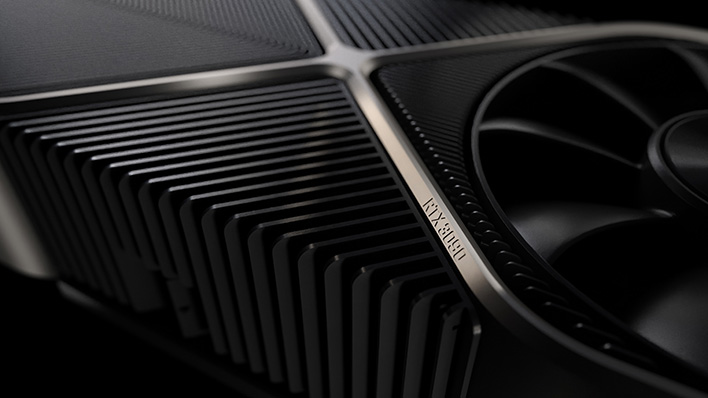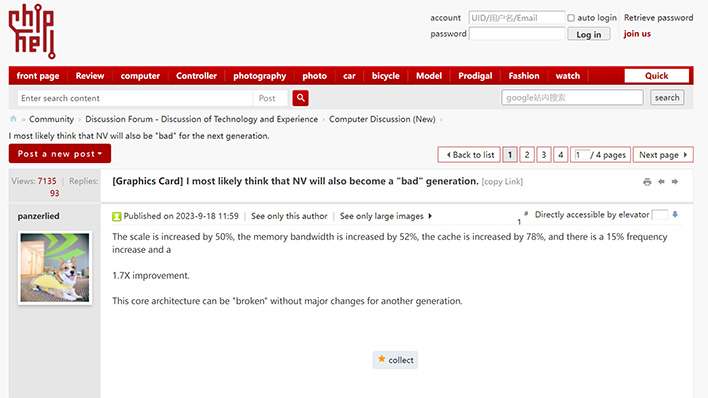GeForce RTX 5090 Rumored For A 2.9GHz Clock A Massive Memory Bandwidth Upgrade

A new leak has revealed that NVIDIA’s future RTX-50 series graphics cards, more specifically the RTX 5090, could receive as much as a 170% performance increase over its RTX 40-series predecessor. The leak highlights key performance increases in several vital areas of NVIDIA’s next-generation GPU architecture, including memory bandwidth, cache capacity, GPU frequency and more.
This is the first major leak we’ve witness so far surrounding NVIDIA’s future RTX 50 series graphics cards (codenamed Blackwell), besides the 512-bit rumors that we saw a few months ago. According to VideoCardz, the leak was apparently backed up by renown hardware leaker Kopite7Kimi over on X (Twitter) which significantly improves the possibility that this leak is valid. Though it's always worth taking any leak (or rumor) with a grain of salt.
The leaker, named Panzerlied, specifically shared five areas of the RTX 5090 that have (supposedly) improved drastically over the RTX 4090.The GPU’s scale/core count will supposedly improve by a whopping 50%, memory bandwidth will improve by 52%, cache capacity will be expanded by 78%, and GPU frequency will be 15% faster. Overall, the RTX 5090 is expected to be 1.7x quicker than the RTX 4090 based on these huge spec changes.
To put Panzerlied’s leak into context, this leaked RTX 5090 has 24,576 CUDA cores, 1.53 TB/s of memory bandwidth, 128MB/s of cache (L1, L2, L3 or combined), and a 2.9GHz Boost Clock. The colossal 1.7x performance improvement is a bit hard to believe, but these RTX 5090 specs would still make it substantially quicker than the RTX 4090.
Some of the 5090’s leaked specs are quite believable, the memory bandwidth in particular is one of them. Samsung’s upcoming GDDR7 memory ICs are right around the corner and will offer up to 32GT/s, allowing 1.53TB/s of memory bandwidth to be easily achievable on a memory sub-system as small as 384-bits wide (the same width as the RTX 4090). 15% higher core clocks are also very possible, in light of the many RTX 4090 overclocks we’ve seen that exceed 3GHz. Lately TSMC has been increasing the clock speed potential on a lot of its nodes, so we could very well see a RTX 5090 achieving close to 3GHz (if not 3GHz flat) out of the box with TSMC’s newer manufacturing processes.
The core count improvements are less believable, but there's a possibility that NVIDIA might use a multi-die chiplet approach to hit a core count of 24,576. However, current rumors estimate NVIDIA will reserve this design preference to its data-center GPUs, due to the fact that multi-die designs introduce additional latency penalties that can impact gaming performance. Still, with how exponential NVIDIA's core count improvements have been over the past few generations, it's possible that NVIDIA can add 50% more cores on a single monolithic die with smaller nodes, a larger die and/or architectural design changes.
However, it's still way too early to tell if these new leaked GPU specifications will carry on into the real RTX 5090. GPU development isn’t a straight-line process. It involves a lot of planning, prototyping and testing that all generates feedback, so there’s a good chance Panzerlied’s GPU specs might become outdated if NVIDIA realizes it can improve or needs to backdown certain elements of its new design.
Still, it's interesting to see what NVIDIA’s next-generation GPU lineup might be able to achieve. Even if the RTX 5090 is just half as fast as Panzerlied’s predictions, it would still represent a monstrous gen over gen improvement compared to the RTX 4090.


